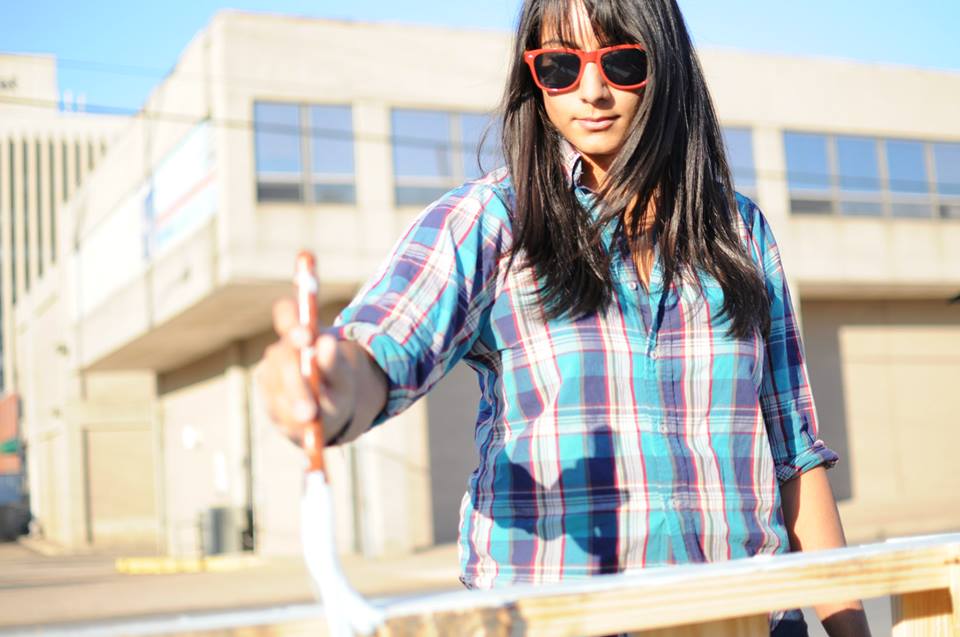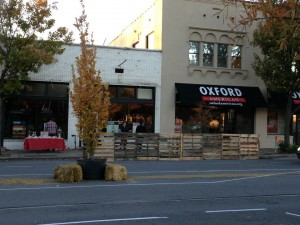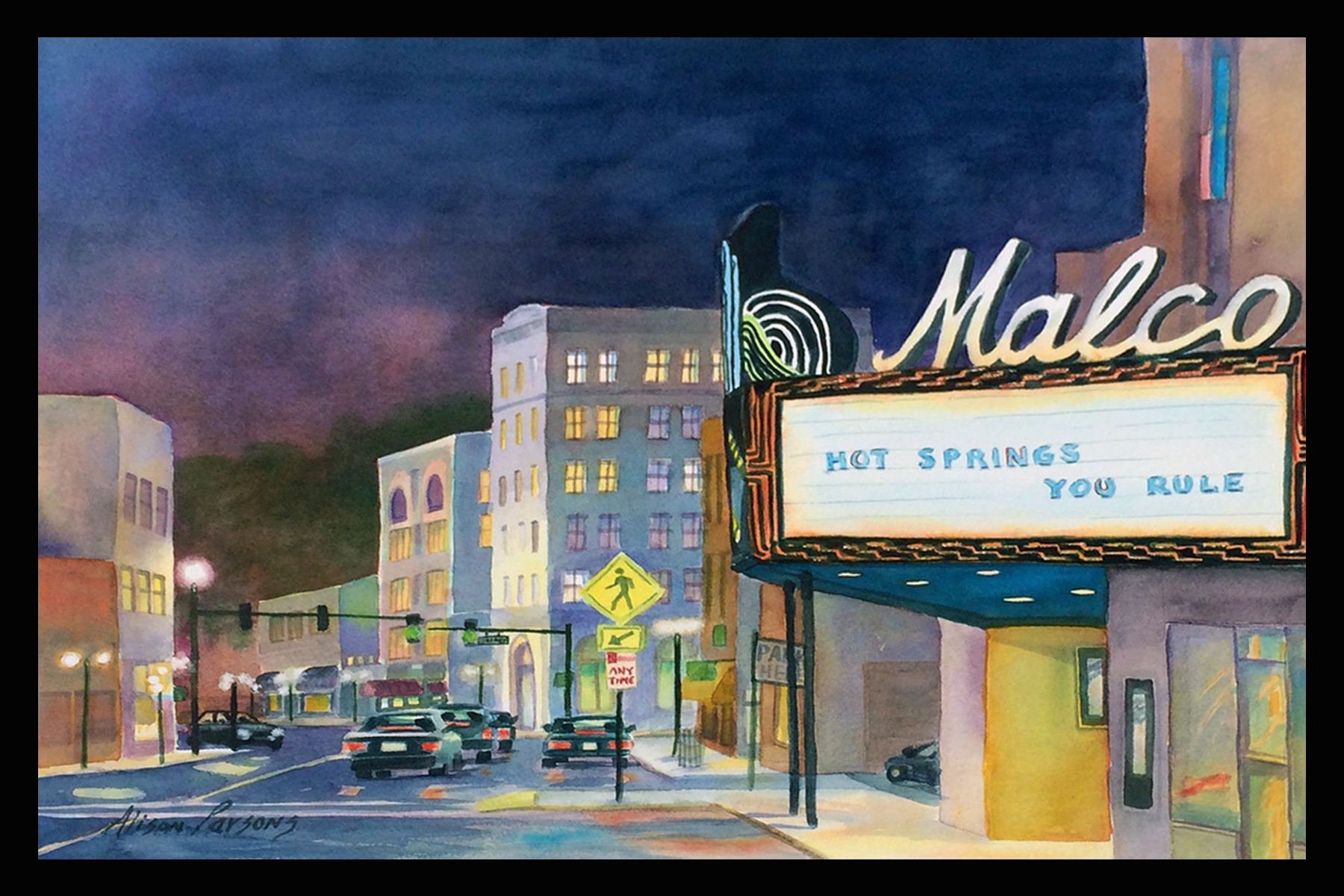Better Blocks PopUp in Arkansas: New urbanist guerillas planning, designing and building the Natural State Now

WORDS / CHRIS HANCOCK
For the first time in decades, perhaps the American development dream isn’t in the suburbs, but in the hearts of our downtowns and historic districts. Some call it new urbanism. Some call it complete streets. Some call it guerrilla economic development or historic preservation. Some call it simple awareness of a place and the people there, respect for what a community wants to be.
Pop Up in the Rock is a community development organization in Little Rock that focuses on enhancing local city areas with underdeveloped potential. It is a joint project of Create Little Rock, the young professionals of the Little Rock Regional Chamber of Commerce, and studioMAIN, a design collective of architects, landscape architects, engineers, contractors, artists, and urbanists, whose primary purpose is to establish and promote collaboration between the design fields and the general public.
 PopUp in the Rock was inspired by the national Better Block movement, founded by the frenetically creative Jason Roberts, of Oakcliff, Dallas, Texas. The goal of the Better Block movement is to enhance a forgotten, desolate, or car-dominated street into a more community-oriented area for just a weekend in the hopes of inspiring permanent change. That’s right, just one weekend.
PopUp in the Rock was inspired by the national Better Block movement, founded by the frenetically creative Jason Roberts, of Oakcliff, Dallas, Texas. The goal of the Better Block movement is to enhance a forgotten, desolate, or car-dominated street into a more community-oriented area for just a weekend in the hopes of inspiring permanent change. That’s right, just one weekend.
When you ask where PopUp started in Arkansas, you get long answers with many caveats. Lots of inspirations and passionate people and organizations are a part of the story because of the inherent community-driven nature of the projects. Ultimately, PopUps in Arkansas are the products of engaged people willing to volunteer those most precious of resources: vision, time and energy. But in search of the origins of PopUp I continually heard of two individuals in particular, friends and partners, Chris East and Buckley O’Mell. Both are hesitant to accept credit, but a grand majority of PopUp planners and volunteers agree that they deserve some. East, an architect with Cromwell, has been an essential part of studioMAIN, and O’Mell, Vice President for Advocacy at the Little Rock Chamber of Commerce, an essential part of Create Little Rock.
The founders were inspired by one extension of the Better Block movement in particular—the Polish the Pearl project in Tulsa, Oklahoma—developed by the Typros (Tulsa Young Professionals). Sixth Street had a flooding problem. An existing proposal to solve this problem had been gathering dust at City Hall. The Typros implemented the proposal, using blue vinyl sheets to create a canal. They made the street safer and better for business with road cones and temporary trees that were both aesthetic and functional. The Typros cleaned up empty storefronts for local vendors to use as pop up shops. In a weekend, a community saw what was possible and a proposal was tested in real-time. It only lasted a weekend, but its impact is visible today.
Create Little Rock and studioMAIN partnered for the first Better Block project in Arkansas, Pop Up Main Street, in November 2012 along South Main Street in Little Rock.
Throughout the community meetings, the PopUp Team heard near-miss tales involving pedestrians, cyclists, dog-walkers, parents with strollers, and even local bakers pushing bread carts across the road. South Main Street had four lanes. Low traffic volume led to a faster average speed. Drivers ignored crosswalks as well as local businesses as they sped by.
An existing but un-utilized proposal called for a road diet, or lane reduction, to solve this problem. The City of Little Rock agreed it was a good idea but didn’t consider it feasible, largely because it had never been done before. While the proposal gathered dust, the PopUp Team implemented it.
PopUp Main Street began November 4th with the restriping of the street. The road was reduced from four to two travel lanes which allowed space for trees in the median. A dedicated bike lane was striped in each direction.
On November 10th South Main hosted pop up shops and entertainment. In the space of a few parallel parking spots, volunteers popped up street-side seating. A Goodwill store popped up in a formerly vacant building. Curious bicyclists stopped and took advantage of pop up bike parking. Local Etsy vendors and food trucks sold out of products and ingredients. Passersby watched as local artists painted murals that already contributed to a new sense of place. Neighbors daydreamed the possibilities for their neighborhood as their dogs played in the pop up Dog Park.
So how much does this cost? How can such immediate change be possible without serious financial resources? PopUp veteran and architect with Witsell Evans Rasco, James Meyer, said it best, “With a community of excited volunteers using tools like duct tape, wooden pallets, and hay bales, this major transformation cost only a few hundred dollars.”
A PopUp is just a snapshot of what’s possible for a block but it gave the community an opportunity to reclaim their neighborhood. It was safe to cross the streets. It was better for business. It was more comfortable, more welcoming and more fun. Hundreds of people, many who had never ventured to South Main, came and saw what was possible.
PopUp Main Street functioned as a rapid-prototype, a full-scale proof of concept without the risk of wasting money or laying blame. The City of Little Rock pursued and received a grant to have Main Street permanently restriped from four lanes to two lanes with a turn lane. South Main, now commonly called SoMa, is proof that short-term action can have long-term impact.
There were too many blocks left to better for the team to stop here. PopUp in the Rock was born. Each year they would focus on another site with underdeveloped potential.
The 2013 project was PopUp 7th Street near Vino’s Brewpub, Weekend Theater, Art Outfitters and the Central Fire Station. Volunteers popped up seating at bus stops and vendors used contractor job-site containers as pop up shops. There was a pop up children’s library, a Goodwill resale shop, and a beer garden. Visitors toured the Central Fire Station and played putt-putt on a pop up miniature golf course designed by Mason Ellis, an architect with Witsell Evans Rasco and Vice President of Bicycle Advocacy of Central Arkansas. The project attracted new business to the area and resulted in an agreement to work with the Central Arkansas Transit Authority (CATA) to begin implementing bus stop seating throughout the city.
For 2014, PopUp in the Rock is expanding its reach outside the Capitol City to the Park Hill neighborhood of North Little Rock along J.F.K. Blvd from B to D Street. PopUp Park Hill is scheduled for Saturday, September 13.
Great things can happen when a group of resourceful and passionate people join forces and develop a plan to implement changes that a community desires, but PopUp has hurdles as well. In fact, part of the spirit of the Better Block movement is to confront roadblocks to community development. Park Hill was chosen in part because of a challenge it presented. The project site is JFK Boulevard, which is also State Highway 107. James Meyer, an architect with Witsell Evans Rasco, believes PopUp Park Hill is an opportunity to collaborate with the Arkansas Highway and Transportation Department, an opportunity to set a healthy precedent for community development projects across Arkansas.
“Many communities are divided by highways built to maximize traffic volume…straight and fast,” Meyer points out, “This leverages the person traveling through town to the detriment of the people living there, and strangles the life and viability of the community.”
In Park Hill, PopUp in the Rock hopes to create and test designs that will make highways safer for both vehicles and pedestrians, designs that could be replicated across Arkansas.
After the success of a community-led effort to allow the sale of alcoholic beverages, and with vacant storefronts, a Jump Start grant and an engaged Historic Park Hill Neighborhood Association, Park Hill is ripe for growth and the PopUp Team sees PopUp Park Hill as a chance to implement changes that will contribute to a more equitable streetscape, and a more vibrant social and economic future for the area and the people who live there.
In 2015, PopUp in the Rock will focus on Little Rock’s Historic West Ninth Street between Mosaic Templars Cultural Center at 9th and Broadway, where Booker T. Washington once spoke, to Dreamland Ballroom where jazz greats like Louis Armstrong, Ella Fitzgerald and Miles Davis performed. One challenge of the project is to cross I-630 via the South State bridge to enable pedestrian and bicycle traffic between Historic West Ninth and Philander Smith College, thereby bridging the gap that originally tore apart the social and economic fabric of West Ninth.
In the meantime the spirit of PopUp is spreading across Arkansas. PopUp in the Rock has inspired several other communities to pursue their own local community-driven projects. Hot Springs, Jonesboro, and Rogers have all held their first PopUp events or will before the end of 2014.
Every block has different needs so no two PopUps are the same but they all follow the same basic formula. Specific needs are learned from local community members, and then those changes are implemented by volunteers. By transforming just a few blocks into a thriving, complete locale, PopUps exemplify the idea that developing potential, even block-by-block, can make our cities better.
PopUp meetings are a melting pot. Participants range in age and profession. They are designers, builders, thinkers, speakers, writers, and artists, but they are all doers and maybe it’s this preference for action, for implementation, for risking mistakes in favor of progress that is the common thread among them. Side projects abound. They are passionate over-obligators, chronically spread thin, and yet even when exhausted they have an energy. Bethany Berry, PopUp in the Rock Co-Chair, jokes that sometimes they have to remember to focus on their real jobs. They meet after work once, sometimes twice a week to plan, plot, and update each other on their progress.
I sat down with PopUp in the Rock Co-Chair Heather Davis, an intern architect with Polk Stanley Wilcox, to learn more about the PopUp process and I’m not surprised to hear that this is just a quick break from work for her even though it’s 6:00 p.m. She’s working late on a deadline related to the renovations of Little Rock’s Robinson Center Auditorium.
IC: At root, what do you need to make a PopUp happen in a community?
HD: A few people that really think it’ll work out and will put in the time and effort to make it happen.
IC: What do each of the partner organizations, Create Little Rock and studioMAIN, bring to PopUp in the Rock?
HD: The experience of studioMAIN’s design professionals gives the PopUps real staying power but just as critical, a variety of people with diverse skills and strengths get involved through Create Little Rock. I think that’s one of the big contributions of Create Little Rock, the variety of different backgrounds. The greater variety of people involved the more successful it will be.
To get involved or to learn more about starting a Better Block project in your community, visit the PopUp in the Rock facebook page or follow @PopUpintheRock on twitter. #PopUpParkHill
(PHOTOS COURTESY OF CHRIS HANCOCK)




Comments